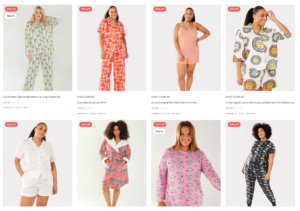by Glynn Davis, founder, Retail Insider
There was no escaping the fact that 2022 was a pretty traumatic year for ecommerce with the share prices of many of the major players in the industry suffering major declines. This looks somewhat justified based on the sales performances of many companies.
The collapse in trading in December rounded out a poor year overall with online retail suffering its lowest ever growth, according to IMRG Online Retail Index figures, which revealed December sales were -10.5% compared with last year and this contributed to year-on-year sales -12%. This represents the first time it has been negative and is significantly down on the previous year-on-year low of +2.7% in 2021.
Thankfully there have been the odd bright spots recorded in December including make-up +8.3%, haircare +9.1%, and lingerie +0.9%. Maybe these positive areas reflect the fact there are some interesting activities taking place online in these categories that gives a much richer experience to shoppers and encourages them to press the buy button.
Testing times
Among the innovations is virtual try-on technology, which is beginning to make its mark in ecommerce – especially within the area of make-up. Various solutions have hit the market including Perfect Corp’s virtual try-on and photo-editing apps that are used by 17 of the world’s 20 largest beauty companies encompassing 450 brands.
The effect on shopping behaviour online is pretty impressive. Clinique has found that customers who use the virtual try-on tool spend four-times as long on its website and are 2.5-times more likely to make a purchase, and order values have increased 30%. Such has been the success of these tools when used online that brands like Estee Lauder have sought to introduce them within 8,000 smart mirrors that allow customers to tap-on various products and see them reflected on their face.
Other players in the market include ModiFace, which was bought by L’Oreal, Ulta Beauty, and beauty brand Shiseido that has teamed up with tech firm Revieve to create its own AI-powered make-up advisor solution. This latter solution was featured in the recent edition of the Retail Insider ‘Digital Retail Innovations’ report that seeks to find the most interesting and potentially impactful digitally-driven innovations in the retail industry.
Made to measure
Within the publication sits a variety of virtual-type tools that are all boosting engagement on websites and enhancing the shopper journey. As well as make-up they are being utilised with the clothing category, where great efforts are being made to better represent products on websites in order to improve customer satisfaction and reduce the levels of returns.
Representing such activity in the report is Amazon and its Made for You try-on solution that enables customers to create clothing designed for their exact body measurements. Once they have supplied the relevant metrics and photos to the Amazon app – that uses 3D scan technology to determine body sizing – they can customise shorts and t-shirts across length, colours, necklines and other fit options. The fit can also be visualised on an avatar that uses the Made for You virtual try-on technology.
Also within the clothing category is the Choose My Model solution used by US-based giant Walmart on its website and app that lets the customer pick a person that resembles their height, shape and skin tone to see how certain clothing looks on a similar body using the power of computer vision and AI. The next development will allow customers to upload their own photos to see how the clothing fits and to share this image with friends.
The other area where serious progress is being made online is within the homewares category where customers can visualise products in their own rooms. At the forefront of this is IKEA that recently launched its latest AI development – IKEA Kreativ, which can be accessed in its app or online. The company claims it is the industry’s first mixed reality, self-service design experience. Customers can use their own imagery or IKEA photos to place items within the AR room. Photographs of rooms can be turned into 3D digital playrooms with wide-angle views that allow items to be removed or added with realistic size and perspective.
These various innovations simply give a flavour of the impressive work that is being done to improve the experience of e-commerce and counter the challenges faced within the online retail environment. It might be a tough market out there but it one that is providing a fertile ground for progressive operators to push the boundaries through technology.










